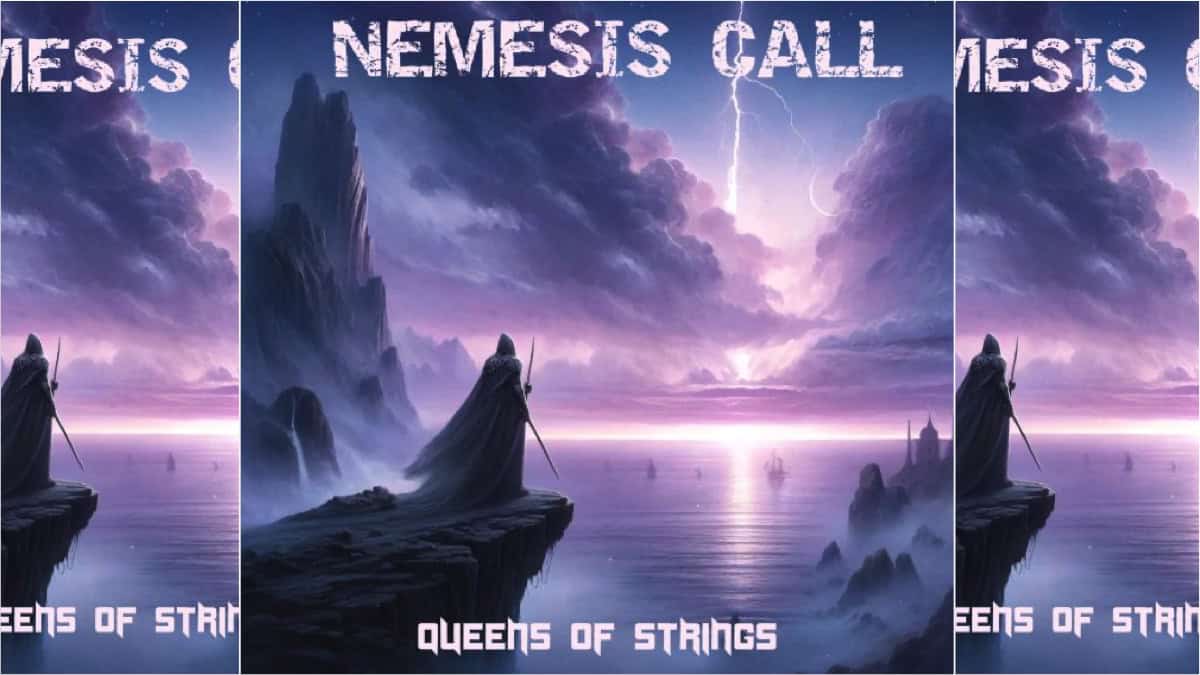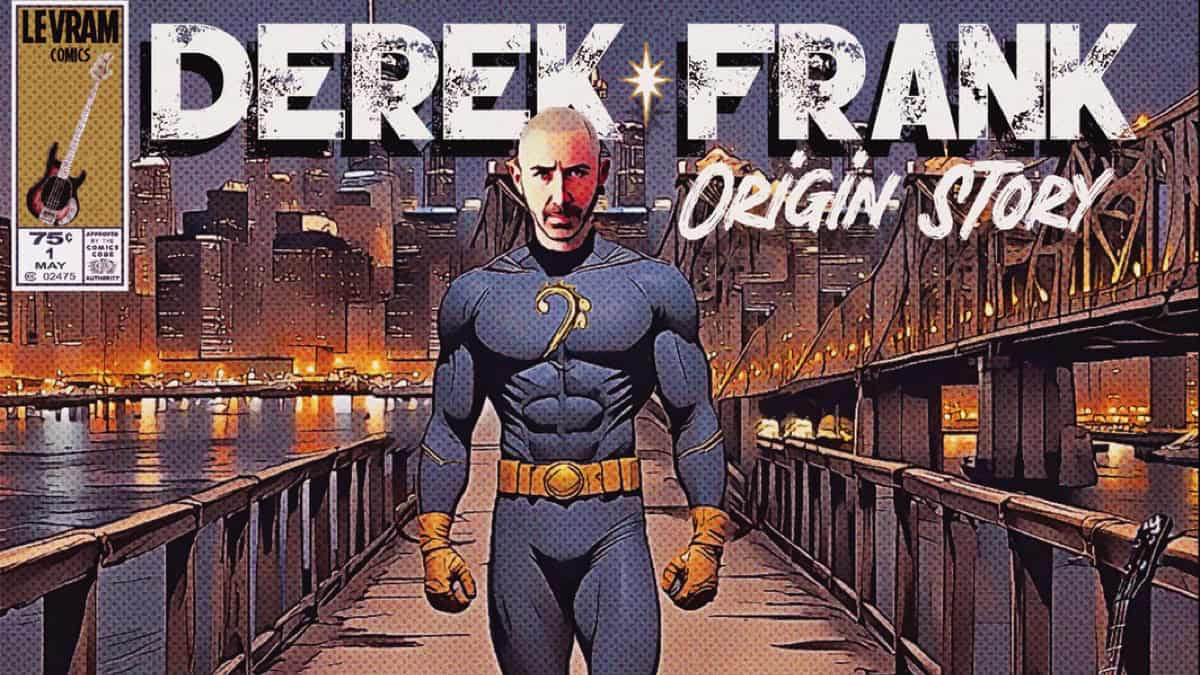Latest
Speed… an End or a Mean? by Igor Saavedra
It’s incredibly interesting how two persons who are studying and putting into practice the same topics, at the same time, might be experiencing something that is completely different.
Musicians and bassists that have a tendency to play faster than the average or faster than most of their colleagues have frequently been criticized. One of the reasons for this is that these “fast runs,” most of the time, have the tendency to sound out of musical context and can be technically deficient… in other words, the musicians that have this tendency are usually trying to say more than what they are able to say properly. But watch out, because this is not always the case!
I think that this expressive manifestation (playing fast), should not be discussed lightly, but rather should be subject to at least one simple, accurate and objective analysis. For me, the first thing is to be able to clearly differentiate the two kinds of subjects that are often interested in playing fast. In this article I’m proposing two classifications as follows: The “Pure Sprinter” and the “Fast Musician”.
1 – The Pure Sprinter
This is the one who likes speed “per se”, that means, this guy doesn’t really care too much if he gets this adrenalin rush from speeding on a bike, car, skateboard, plane, playing on his PSP, or who knows… maybe playing a musical instrument.
In my opinion there are two types of Pure Sprinters who play music.
a) The Self Assumed Pure Sprinter:
This guy enjoys the vertigo of speed, but he understands that this fact doesn’t necessarily mean he’s a good musician; He really doesn’t care too much about music, he enjoys the speed experience and that is it. He might be also pursuing some commercial purposes… remember the rock bands of the 80’s?
b) The Self Fooled Pure Sprinter:
This is the one who doesn’t necessarily enjoy too much the vertigo of playing music fast, though he swears that this fact in itself transforms him, as if by magic, into a superlative musician. He thinks that his musicianship is directionally proportional to the speed he is able to achieve. This is the worse situation in my opinion, because this guy thinks that he is a real musician, but he is not.
2 – The Fast Musician
This is the one who likes music in the first place, indistinctly from the way he chooses to express it. Speed is just one of these ways, so for him speed is a mean to enhance the musical discourse, but will never be an end to itself.
In my opinion there are also two types of Fast Musicians.
a) The Decontextualized Fast Musician:
This is the one who, even though will never put the speed as an end to itself, on the other hand will not hesitate to push the throttle if his guts ask him for that. He will not worry too much if this action will be suitable for the musical context or not. In other words, this guy likes to play music “fast”.
b) The Contextualized Fast Musician:
This is the one who, apart from the fact of being able to understand the speed as a mean, while having the technical ability and the necessary knowledge, also knows when is the proper moment to play fast, always putting the needs of the musical context over his personal needs.
I hope these lines will serve for you to recognize which of these four guys you are listening to in any moment, and with just a little attention it will be crystal clear after a couple of minutes. Needless to say, they all have the merit of at least having spent many hours and years developing a skill, but this ability will have many nuances in terms of real value and consistency.
In my opinion, the most significant and prominent of all these subjects will always be “The Contextualized Fast Musician”, because he has the necessary characteristics to be able to locate speed at the proper place, just as a mean, for which he must have the necessary abilities if the situation and the musical context requires to deliver. This “Contextualized Fast Musician” eventually earns his right to get rid of this denomination, and be called simply, “The Complete Musician” (With the understanding that he is also meeting all the other features required).
There is nothing wrong with developing speed skills in music, the problem arises when it aims to be an end in itself and not a mean that will further enable the performer to play music fast without any problem if he wants, because his physical speed limits (muscular and neuronal) and his musical knowledge are far above what is required.
So what for?
I think that I’ve expressed my opinion very clearly on this article putting the speed as a mean and not as an end, but there’s a little exception to this “rule.” What’s the point in playing fast? Well, speed is a part of life as slowness is… life is like Ying and Yang and all the opposites are always communicating and harmonizing, and obviously both are always necessary, so that means playing fast is also necessary.
Playing slow ballads is cool and I love it, but for some reason people assume that a musician that has the tendency to play slow or mid-speed music has to be more “musical” than a musician that has the tendency to play fast. In my opinion, this is just a construction made up by the sum of opinions of many people through the years that have not had the luck of having heard good “fast” music or musicians, or maybe by frustrated musicians that have not even being able to achieve a valid aspect of the music spectrum which is to play fast, so to be able to transmit effectively human feelings and experiences like anxiety, hesitation, dizziness and many more.
As I said, a Complete Musician also has to be able to transmit this feelings effectively, as long as they are able to achieve a fast harmonic mental process and obviously to achieve the technique needed to transmit those ideas on the instrument.
All of us know that being able to play slow eventually helps to be able to play fast, but you don’t have to forget that being able to play fast also helps to play slow. How is that?
Let’s say the legal limit on the highway is 90 miles per hour. A good example is the feeling you get while driving a Ferrari Enzo at 90 miles per hour (The car is capable of going at 220 miles per hour). Compare that feeling to the one you will get driving a Ford Escort (nothing against that car) at the same 90 miles per hour. (This car is able to go at a maximum speed of 110 miles per hour)
Suppose both situations are within the legal speed limit… so both situations are “legal”, so nobody is going faster than he should. While you are driving the Ferrari your maximum speed is way above so the car is completely “relaxed” and is not being forced at all in any way; Needless to say that what is happening to the Ford Escort is quite the opposite.
We might choose to try and achieve that Ferrari feeling while also being a respectful driver, driving at 45 miles an hour when we are on the city, at 90 miles per hour when we are on the Highway, and if we are in Germany driving at the Autobahn where there’s no speed limit we will just love to drive whatever speed we want and enjoy the ride. With this I’m trying to express that we should always be considering the musical context we are in, so to be able to decide if we are going to play fast or not.
For the musician, the audience is able to feel very easily if you are close to burning your engine, because your face and your gestures, and mostly the music you are playing will always show what’s happening with you. We don’t want to transmit uncomfortableness to our audience, so if we are going to have to play fast we want them to feel that adrenalin rush without suffering. If we want them to experience pain, suffering or something like that, we must use a “voluntary” musical tool.
When studying music I always tried to practice taking into consideration that I wanted to be “musical” in the first place. In terms of technique I wanted to achieve the maximum efficiency and the maximum relaxation possible also while trying to get the best sound I could… that was my trip. What happened eventually was that without even noticing I was able to play sixteenth note lines over 300 bpm on my bass. I have never played at that speed in any musical context because I haven’t found the musical reasons to do that, but I can tell you that just knowing and “feeling” the potentially achievable speed has helped me to play at the usual fast speeds without suffering at all (physically and emotionally), and I think that all this happens for the reasons I’ve mentioned throughout this article.
Finally, is up to you… all I’ve said here is just my opinion about “The speed issue in music”, and is based on my personal experience. I suggested taking the speed as a mean and not as an end, but I’ve also mentioned what I consider just the only case in which speed might be and end in itself, but always relating it to the musical context.
Let me know what you think!
See you guys on my next article…
Gear News
New Gear: Spector Doug Wimbish USA Custom Series Basses

Spector offers Doug Wimbish USA Custom Series basses…
Spector, a leading authority in bass guitar design, unveils two new Doug Wimbish USA Custom Series basses. Synonymous with bass excellence since 1987, Wimbish collaborated with Spector’s USA Custom Shop to create the DW-4 and DW-5 models, echoing the iconic instruments that have been favored heavily throughout his recording and performing career.
These signature basses faithfully replicate Wimbish’s originals, down to the smallest details like neck contours and nut widths. Customized EMG pickups, developed in collaboration with Wimbish, capture the distinctive sound that has shaped his monumental musical impact. These models invite players to explore the feel and response that have defined Wimbish’s signature style over the years.
Available in 4-string and 5-string versions, each model boasts unique features & finish options. The DW-4 comes in Amber Stain Gloss and Black Stain Gloss options, while the DW-5 offers Dark Blue Stain Gloss and Faded Natural Gloss. Every purchase includes a certificate of authenticity signed by Doug Wimbish. Wimbish comments, “Spector took the time to get every little nuance right, and that to me is dedication and being thoughtful enough to know ‘I want to nail it,’ and they did. I’m able to pick these instruments up for the first time and play them like I’ve already had them for years.”
For more information, visit spectorbass.com/doug-wimbish-usa-signature-series/.
Photo: Doug Wimbish, pictured with the new Spector Doug Wimbish USA Custom Series basses
Bass CDs
New Campaign: Alberto Rigoni, Nemesis Call – Queens Of Strings

Italian bass master and composer ALBERTO RIGONI is thrilled to announce his brand new project “Nemesis Call – Queens Of Strings”.
Nemesis Call – Queens Of Strings features a super talented drummer from Japan (TBA) and tons of female guitarists such as SAKI, Giusy Busetto, Alexandra Zerner (TBC) and many many others (TBA). Furthermore, Alberto has also launched a Fundraising Campaign for the project. 20% of the income will be donated to Lega del Filo d’Oro legadelfilodoro.it/it, an Italian association that helps deaf and blind children!
Alberto shares:
“Hello friends and music lovers! I’m Alberto Rigoni, an Italian composer and.. a BASS GUY! Between 2008 and 2024 I released 13 solo albums, spanning from progressive, rock, ambient to funky and experimental music, which also features contributions from musicians such as keyboard wizard Jordan Rudess (Dream Theater) drummer Gavin Harrison (Porcupine Tree) and Marco Minnemann (the Aristocrats), keyboardist Kevin Moore (ex Dream Theater), singer John Jeff Soto (ex Goran Edman (ex Y. Malmsteen), bassists Nathan East, Stu Hamm (Joe Satriani), Nik West (ex Prince) and many others. I’m also bass player for BAD As, Sunset Groove Society, Kim Bingham, The Italians bands and co-producer of Mistheria’s Vivaldi Metal Project.”
Alberto on the new project Nemesis Call:
“Even if my latest album “Unexpected Lullabies”, dedicated to my newborn Vittoria Parini Rigoni, will be released on June 4th, 2024, when Vittoria came to life I felt the need to compose new music (yes, I really can’t stop!!!!!). This time will be quite challenging because I’m willing to release an instrumental ambient/prog/rock/metal album, that will feature a talented and young drummer (TBA) and tons of female guitarists (that’s why I will call the album “Queens of the Strings”) such as Alexandra Zerner, YOKA and many others (TBA/TBC)). It won’t be easy to manage all such great musicians but I will make it!! Are you ready to face a new prog experience? The album will be released in Digipack CD and in high-quality digital format approximately at the beginning of 2025.”
The Fundraising Campaign:
As an independent artist, Alberto is looking for supporters who can help him reach the budget for the production (recordings, mix, mastering, artwork etc.) of this new album and has started this fundraising campaign that will end successfully on October 15th, 2024.
Get further information about Alberto Rigoni’s new project Nemesis Call Fundraising campaign at albertorigoni.net/nemesiscal
Bass Videos
Artist Update With Bassist Derek Frank

Bassist Derek Frank…
Many of you will remember the last time I chatted with Derek Frank was back in 2017. The main thing that impressed me was how busy Derek was and how he juggled playing with many huge acts.
Now, I am happy to hear that Derek launched a new album last March titled “Origin Story” where he digs deep into his roots and pays homage to Pittsburg.
Join me as we get caught up after all these years and hear the details about the new album, how Derek gets his sound, and his plans for the future.
Photo, Stephen Bradley
Featured Videos:
Visit Online:
www.derekfrank.com
www.instagram.com/derekfrankbass
www.youtube.com/derekfrankbass
www.facebook.com/derekfrankbass
Latest
This Week’s Top 10 Basses on Instagram

Check out our top 10 favorite basses on Instagram this week…
Click to follow Bass Musician on Instagram @bassmusicianmag
FEATURED @foderaguitars @bqwbassguitar @lecomptebass @xvector_basses @vuorensaku_guitars @phdbassguitars @meridian_guitars @sterlingbymusicman @ramabass.ok @overwaterbasses
Gear News
New Gear: Alberto Rigoni Signature Bass, the VPR5 by Gaetano Costanzo!

Alberto Rigoni Signature Bass, the VPR5 by Gaetano Costanzo!
Internationally renowned bassist ALBERTO RIGONI (soloist, BAD AS, Vivaldi Metal Project, TwinSpirits, etc.) is proud to announce the release of his signature bass VPR5 made by renowned Italian luthier Gaetano Costanzo!
The bass is entirely handmade in Italy, without the use of CNC or other machinery, and has rather special features. The VPR is a 5-string bass (but also available as a 4-string) with 30 frets, Seymour Duncan pickups, Music Man Alnico style, passive electronics (volume, tone and a switch to select series/parallel/single-coil mode), alder body, and American maple neck and fingerboard. Gotoh tuners that ensure perfect intonation. The bass is totally painted white (nitro finish) but other colors can be requested. The VPR has a weight of about 2.9 kg and suitable for any genre.
For more information contact Gaetanobass77@gmail.com or visit online at www.instagram.com/gaetanocostanzoluthier or www.facebook.com/GaetanoCostanzoLuthier














